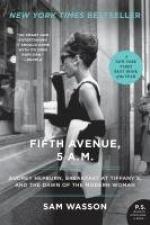|
This section contains 165 words (approx. 1 page at 300 words per page) |
From her first starring role as a princess in Roman Holiday (1953), Audrey Hepburn, the daughter of an Anglo-Irish banker and a Dutch aristocrat, was lauded for bringing a stately "European" elegance to Hollywood. Her director in 1954's Sabrina, Billy Wilder, declared: "After so many drive-in waitresses in movies, here is class." Hepburn's androgynous looks and waifish physique—photographer Cecil Beaton called her "the gamine, the urchin, the lost Barnardo boy"—challenged and redefined the dominant popular image of femininity in the fifties, the curvaceous, all-American bombshell typified by Marilyn Monroe. Hepburn often played royalty (Roman Holiday; War and Peace, 1956) or a poor, modest girl who achieves a fairy-tale rise to high society (Sabrina; Funny Face, 1957; My Fair Lady, 1964). Though cast somewhat against type as a scandalous socialite in Breakfast at Tiffany's (1961), Hepburn's Holly Golightly, as Robyn Karney observes, "passed into the iconography of the 1960s."
Further Reading:
Karney, Robyn. A Star Danced: The Life of Audrey Hepburn. London, Bloomsbury, 1993.
|
This section contains 165 words (approx. 1 page at 300 words per page) |


